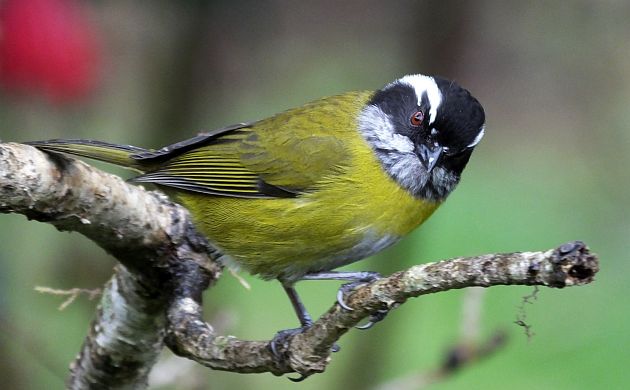
Myriam’s Quetzales! Are they her’s? Can there be a more enticing name than for a place that that? To be honest, quetzals aren’t seen that often right at Myriam’s but they are seen just down the road. You see, Myriam’s is located in what might be the Resplendent Quetzal capital of the world, the valley of San Gerardo de Dota, Costa Rica.
Even the non-birders will love the scenery.
Yes, the R. Quetzal is THE beloved, sacred bird of Guatemala and they do live there (and in southern Mexico, Honduras, Nicaragua, and Panama) BUT are more accessible in Costa Rica. Stay at any of the hotels around San Gerardo and you will be taken on a quetzal walk in the morning (the same goes for El Toucanet Lodge, Paraiso de Quetzales, Mirador de Quetzales, and one or two other places). If the birds are feeding along the road, you can just as easily find them yourself. Last weekend, I did that while guiding a trip for the Birding Club of Costa Rica. We watched several female R. Quetzals on the roadside but to be honest, the overall birding was just as satisfying around Myriam’s; a small diner, cabins, and set of trails through nice high elevation forest run by a very friendly, gracious family.
These people feed birds. These people feed you wonderful home-cooked food. These people also know about the rare Unspotted Saw-whet Owl and will take you on a night hike to look for it. These people treat their guests like gold and are people I love to support.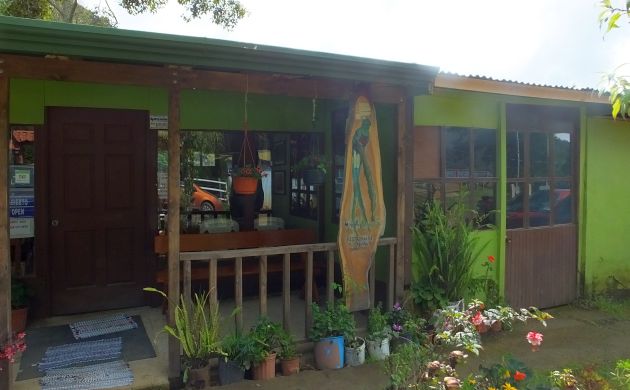
The front entrance of Myriam’s.
Hang out at Myriam’s to enjoy the high elevation bird show. Endemics shared with western Panama make up a fair percentage of the local avifauna and several come to feeders and vegetation behind the small restaurant (those specialties are marked with an E).
Flame-colored Tanagers are pretty common.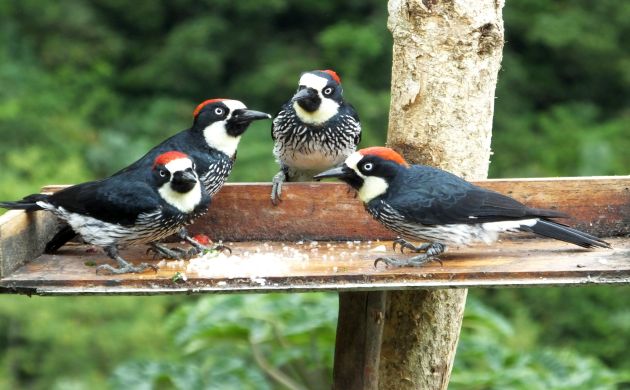
We watched Acorn Woodpeckers laugh and dive bomb a squirrel.
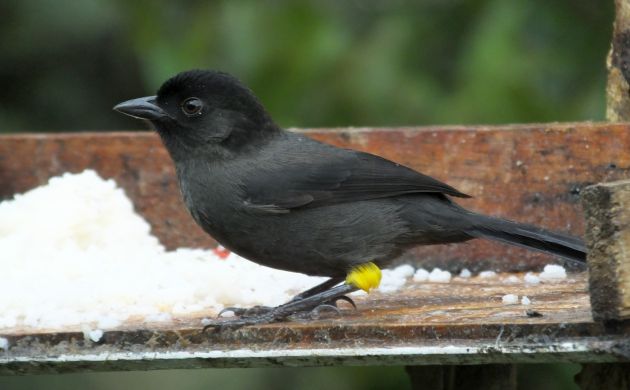 Yellow-thighed Finch (E) is usually in the house.
Yellow-thighed Finch (E) is usually in the house.
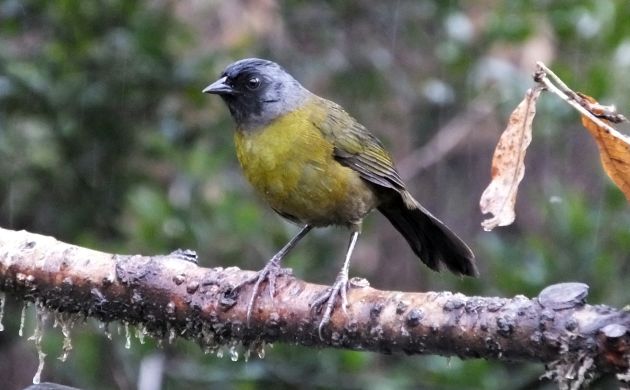 Large-footed Finch (E) also shows off.
Large-footed Finch (E) also shows off.
 Big Sooty Thrushes (E) are pretty common.
Big Sooty Thrushes (E) are pretty common.
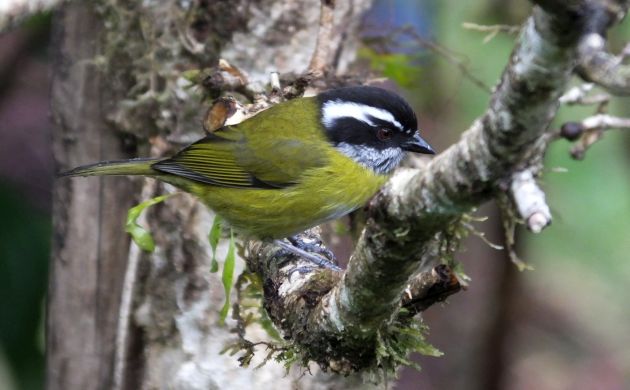 Sooty-capped Bush-Tanager (E) also visits the feeder. Now known as a Chlorospingus, we were joking that it should be called “The Chlorospingus formerly known as the Sooty-capped Bush-Tanager”, or just “The Artist”)
Sooty-capped Bush-Tanager (E) also visits the feeder. Now known as a Chlorospingus, we were joking that it should be called “The Chlorospingus formerly known as the Sooty-capped Bush-Tanager”, or just “The Artist”)
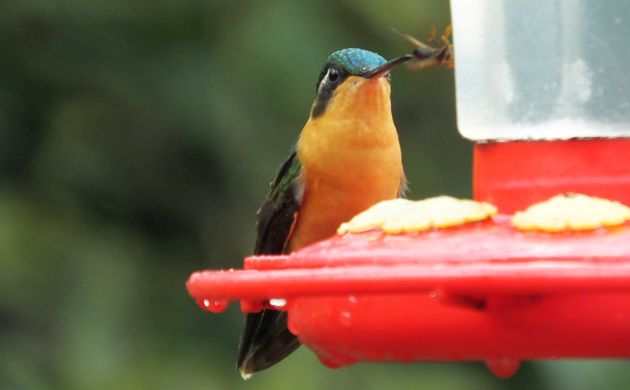 White-throated Mountain-gem (E) can be seen at the feeder before it is eventually chased away by a Magnificent Hummingbird. This is the female.
White-throated Mountain-gem (E) can be seen at the feeder before it is eventually chased away by a Magnificent Hummingbird. This is the female.
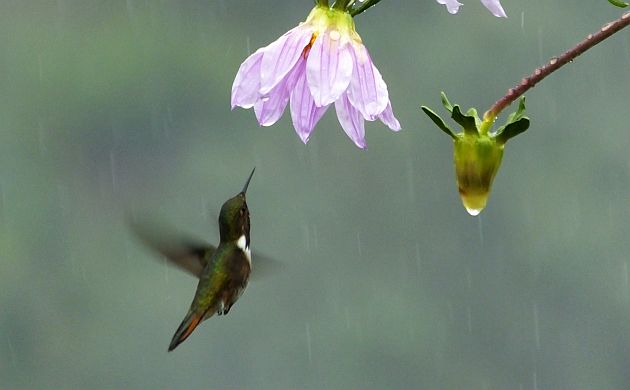 Several Volcano Hummingbirds (E) visited flowering bushes.
Several Volcano Hummingbirds (E) visited flowering bushes.
As the light fails and temperatures fall at the onset of the 2,700 meter elevation night, Dusky Nightjars (E) call, and Bare-shanked Screech-Owls (E) can be heard. At seven or eight, if you are lucky, you might even hear the saw-whet sans spots. We even heard one sing briefly across the street from the restaurant (alas, it did not come closer for a view)!
The cabins are closer to good forest and the birding turns up a different set of highland endemics. Although we were both rained and fogged out, we still managed a surprise Green-fronted Lancebill, Collared Redstart (E), Peg-billed Finch (E), Yellow-winged Vireo (E), Wrenthrush (E), Silvery-fronted Tapaculo (E), Ruddy Treerunner (E), and some other birds.
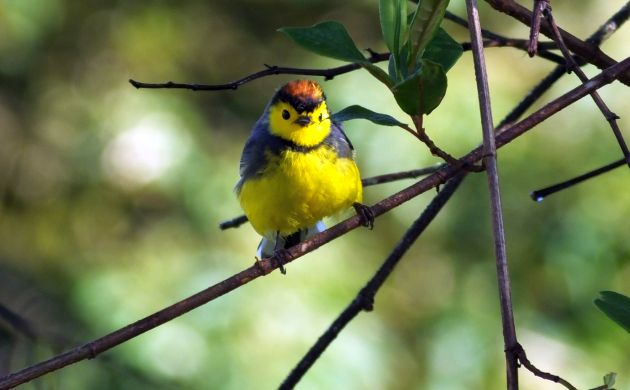 The ever cute Collared Redstart.
The ever cute Collared Redstart.
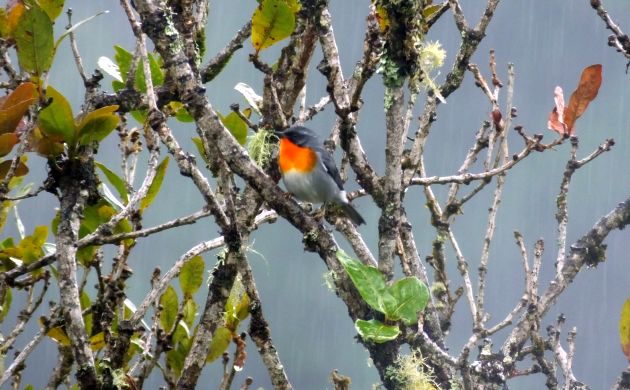 We also saw Flame-throated Warbler (E).
We also saw Flame-throated Warbler (E).
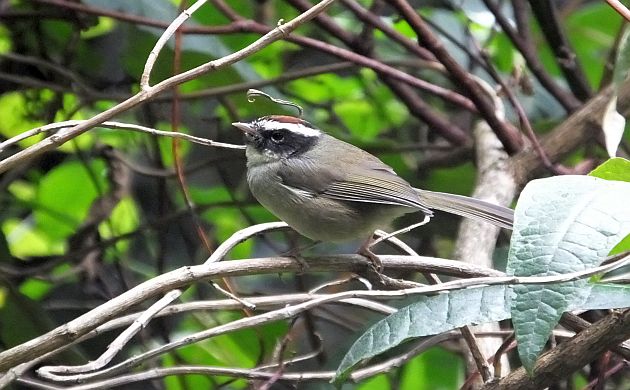 And, Black-cheeked Warbler (E).
And, Black-cheeked Warbler (E).
Even if you don’t stay at Myriam’s when birding the Dota Valley, a stop at this welcome site is always worth it. How does dinner followed by a search for the Unspotted Saw-whet Owl sound?












It sounds just lovely. The photos in this post are great – wish I could make a visit tomorrow! Thank you.